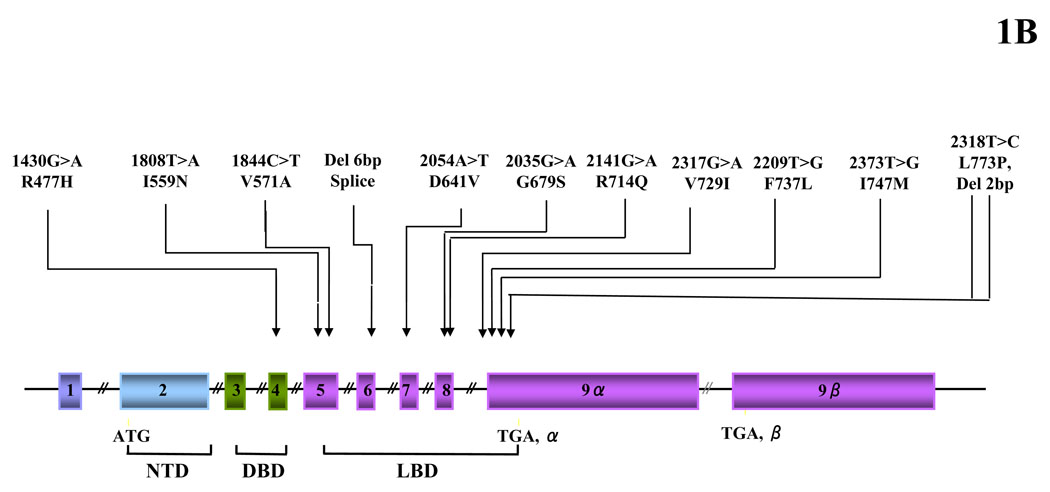Figure 1.
Heuristic, simplified representation of the glucocorticoid signaling system and gene and pathologic mutations of the GR gene causing Chrousos syndrome. (A) Nucleocytoplasmic shuttling of the glucocorticoid receptor. Upon binding to the ligand, the activated hGRα dissociates from heat shock proteins (HSPs) and translocates into the nucleus, where it homodimerizes and binds to glucocorticoid response elements (GREs) in the promoter region of target genes or interacts with other transcription factors (TFs), such as activator protein-1 (AP-1), nuclear factor-κB (NF-κB) and signal transducer and activator of transcription-5 (STAT5), ultimately modulating the transcriptional activity of respectively GRE- or TFRE-containing genes. (B) Location of the known mutations of the glucocorticoid receptor (hGR) gene causing Chrousos syndrome. DBD: DNA-binding domain; GR: glucocorticoid receptor; GREs: glucocorticoid response element; HSP: heat shock protein; LBD: ligand-binding domain; NTD: amino terminal domain; TF: transcription factor; TFRE: transcription factor response element.


